The Cu Chi Tunnels and Mekong Delta present an intriguing intersection of history and nature, where the ingenuity of the Vietnamese people unfolds against a backdrop of breathtaking landscapes. These tunnels, a testament to resilience during conflict, weave through the earth like veins, while the Mekong Delta, with its vibrant ecosystems and agricultural bounty, tells a story of survival and sustenance. As one explores these regions, they encounter not just relics of the past but also the living culture that thrives here. What secrets remain hidden beneath the surface, waiting to be uncovered?
Historical Significance of Cu Chi Tunnels
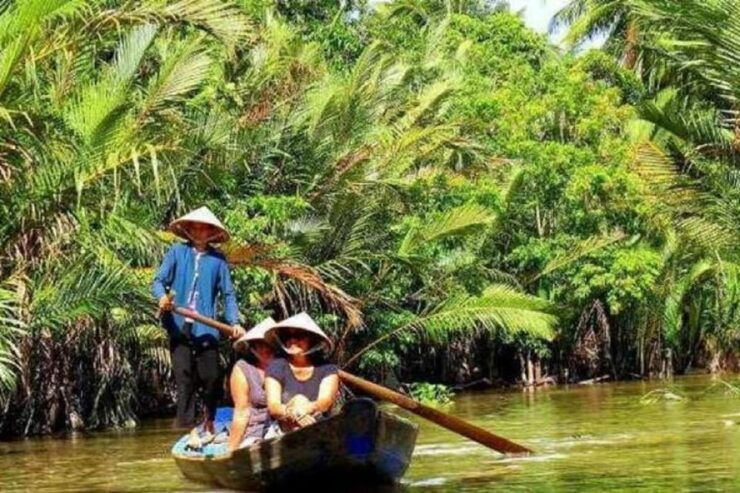
The Cu Chi Tunnels, nestled beneath the surface of Vietnam’s lush landscape, hold profound historical significance as a testament to the ingenuity and resilience of the Viet Cong during the Vietnam War.
Spanning over 250 kilometers, this intricate network served as a strategic base, enabling guerrilla fighters to launch surprise attacks while remaining hidden from their adversaries.
The tunnels housed living quarters, storage facilities, and even hospitals, showcasing the resourcefulness of those who crafted them.
Visitors today can explore these historic passages, gaining insight into the daily struggles and triumphs of the Viet Cong.
The tunnels symbolize not just a dark chapter in history, but also the indomitable spirit of a people who fought for their freedom against overwhelming odds.
You can check if your dates are available here:The Unique Architecture of the Tunnels

Beneath the surface of Cu Chi lies an extraordinary feat of engineering that reflects the ingenuity of its creators.
The tunnel system stretches over 250 kilometers, featuring multiple levels designed for various purposes. Each tunnel is strategically placed, with narrow entrances camouflaged to evade detection.
The architects incorporated living quarters, storage areas, and even makeshift hospitals, showcasing their resourcefulness. Ventilation shafts, cleverly positioned, ensure airflow while maintaining secrecy.
Some sections include trapdoors and booby traps, enhancing their defensive capabilities. The tunnels aren’t merely a refuge; they embody the resilience and creativity of those who built them.
This unique architecture, a blend of function and survival, tells a compelling story of a community thriving under adversity.
Interested in history? More Southern Vietnam historical sites we've covered
The Role of the Mekong Delta in History
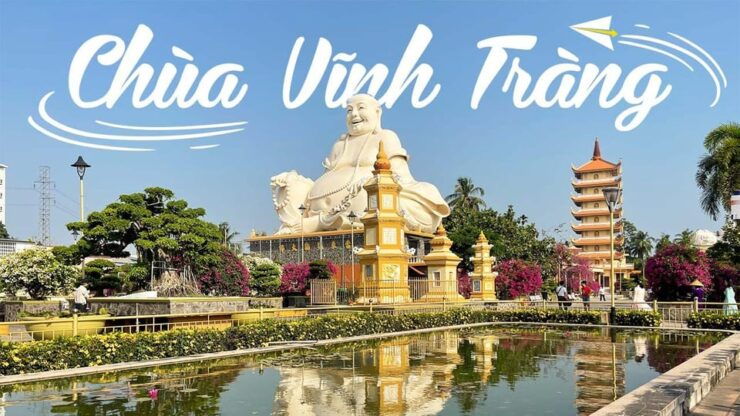
Historically shaping Vietnam’s cultural and economic landscape, the Mekong Delta has served as a vital artery for trade and agriculture for centuries.
This lush region, nourished by the waters of the Mekong River, has provided fertile land for rice cultivation, which remains a staple of the Vietnamese diet.
The Delta’s intricate network of rivers and canals facilitated transportation, enabling local farmers to access broader markets, thus boosting trade.
During the Vietnam War, the area became crucial for guerrilla tactics, with its waterways serving as hidden routes for supplies and communication.
Today, the Mekong Delta continues to be a key player in Vietnam’s economy, contributing to both agriculture and tourism, while preserving its rich cultural heritage and historical significance.
Natural Beauty of the Mekong Delta
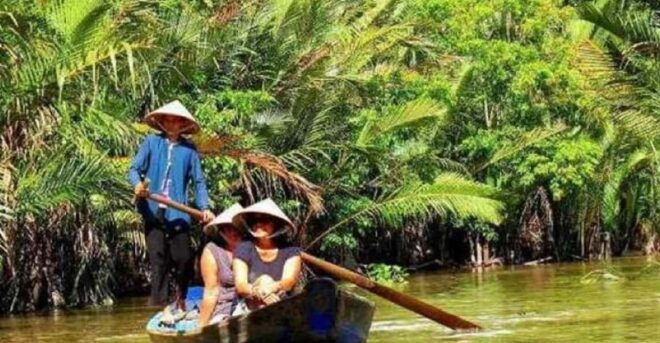
How does one capture the stunning allure of the Mekong Delta? This vibrant region boasts a tapestry of lush landscapes, where emerald rice paddies stretch endlessly beneath a cerulean sky.
The winding rivers, teeming with life, reflect the hues of dawn and dusk, creating a breathtaking backdrop for daily activities. Vibrant floating markets bustle with vendors selling fresh fruits and handmade goods, while serene villages rest along the water’s edge, offering glimpses into traditional life.
Towering coconut palms sway gently in the breeze, and the air fills with the sweet scent of ripe mangoes and jackfruits. Nature thrives here, with exotic birds flitting through mangroves, making the Mekong Delta a true paradise for nature lovers and adventurers alike.
Cultural Experiences in the Mekong Delta

Nestled within the vibrant tapestry of the Mekong Delta, visitors enjoy a rich cultural experience that seamlessly blends tradition and daily life.
They cruise along the Tien River, discovering the mythical islets of Dragon, Kirin, Tortoise, and Phoenix. Strolling through lush orchard gardens, they savor the sweet taste of seasonal tropical fruits. The melodic strains of Don ca tai tu, a beloved Southern folk music, fill the air, inviting all to join in the local rhythm.
Horse-drawn wagons offer a leisurely ride, while hand-rowed sampans glide quietly through tranquil waters. A riverside lunch featuring deep-fried giant gourami and spring rolls showcases the region’s culinary delights, making every moment in the Mekong Delta an unforgettable cultural journey.
More Great Thing To Do NearbyWildlife and Ecosystems in Cu Chi
The Cu Chi Tunnels region boasts a unique ecosystem that thrives amidst its historical significance. This lush area is home to diverse wildlife, including various species of birds, reptiles, and mammals.
The dense foliage provides a perfect habitat for creatures like the endangered black-shanked douc langur and the elusive wild boar. Plus, the waterways support a rich array of aquatic life, attracting fish and crustaceans that play a vital role in the local food chain.
The intertwining of these ecosystems showcases the delicate balance of nature, with habitats often influenced by the area’s historical use. Visitors are often captivated by the harmonious blend of wildlife and history, making Cu Chi not just a site of war but also a sanctuary for biodiversity.
- Ho Chi Minh City Private Shore Excursion From Tan Thanh – Southern Vietnam
- PRIVATE MEKONG Shore Excursions From Cruise Port
- Private Shore Excursion of Cu Chi Tunnels and Ho Chi Minh City
- Best of Ho Chi Minh City Shore Excursions From Cruise Port
- Baria – Vung Tau Tour
- Private Shore Excursion With Lunch: Best of Ho Chi Minh City – Southern Vietnam
Traditional Cuisine of the Region
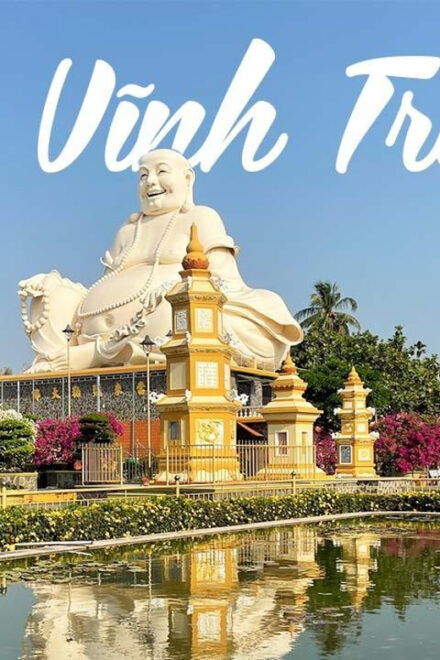
Savoring the rich flavors of traditional cuisine, visitors to the Cu Chi Tunnels and Mekong Delta can indulge in a variety of dishes that reflect the region’s cultural heritage.
Among the standout offerings is the boiled tapioca, a simple yet hearty dish that evokes memories of wartime resilience. Accompanied by hot pandan tea, it’s a comforting treat.
In the Mekong Delta, fresh ingredients shine through in specialties like deep-fried giant gourami and spring rolls, bursting with flavors from local herbs and spices.
Diners can also enjoy giant fried sticky rice balls, a delightful fusion of texture and taste. Each dish tells a story, inviting visitors to experience the essence of Vietnamese culinary tradition.
Tips for Visiting Cu Chi and Mekong Delta
When planning a visit to the Cu Chi Tunnels and Mekong Delta, travelers should keep a few practical tips in mind to enhance their experience.
First, dress comfortably and wear sturdy shoes, as exploring the tunnels involves crawling and walking on uneven terrain. A camera is essential for capturing the stunning landscapes and unique cultural moments.
It’s wise to bring cash for personal expenses and optional activities, like shooting ranges. Travelers should also stay hydrated, especially during the Mekong Delta cruise.
Lastly, consider joining a guided tour for in-depth knowledge and seamless logistics. By following these tips, visitors can truly enjoy the rich history and vibrant culture of this remarkable region.
The Sum Up
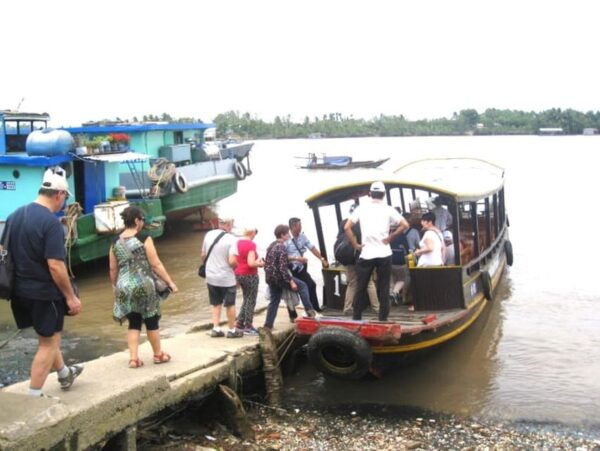
The Cu Chi Tunnels and Mekong Delta offer an unforgettable journey through Vietnam’s rich history and breathtaking landscapes. Visitors can explore the ingenious tunnel designs that once sheltered resilience and strategy, while also reveling in the lush beauty of the Mekong’s rivers and rice paddies. With vibrant cultural experiences and delicious traditional cuisine, this region invites travelers to connect with both its past and present, making it a must-visit destination for anyone seeking to understand the heart of Vietnam.
You can check if your dates are available here:More Historical Tours in Southern Vietnam
More Tour Reviews in Southern Vietnam
- From HCM: Mekong Delta Tour 1 Day W Small Group (Max 11PAX)
- Ho Chi Minh: Small Group or Private Tour Mekong Delta 1 Day
- Viet Nam: Personalized Itinerary, Personal Tour Guide
- From Ho Chi Minh:Mekong Delta 4 Island Group or Private Tour
- From Ho Chi Minh: Mekong Delta Delta and Vinh Trang Pagoda
- From Ho Chi Minh: Classic Mekong Delta 1-Day Tour
Looking for something different? Other Southern Vietnam activities we've written about
- From HCM: Mekong Delta Tour 1 Day W Small Group (Max 11PAX)
- Ho Chi Minh: Small Group or Private Tour Mekong Delta 1 Day
- 25 Best Tours In Southern Vietnam
- 4 Best 3 Day Tours In Southern Vietnam
- 4 Best Full-Day Tours In Southern Vietnam
- Best Bike Tours In Southern Vietnam
- 11 Best Boat Tours And Cruises In Southern Vietnam
- 13 Best Private Driver Services In Southern Vietnam
- 20 Best City Tours In Southern Vietnam
- 4 Best Historical Tours In Southern Vietnam
- 15 Best Shore Excursions In Southern Vietnam
- Viet Nam: Personalized Itinerary, Personal Tour Guide
